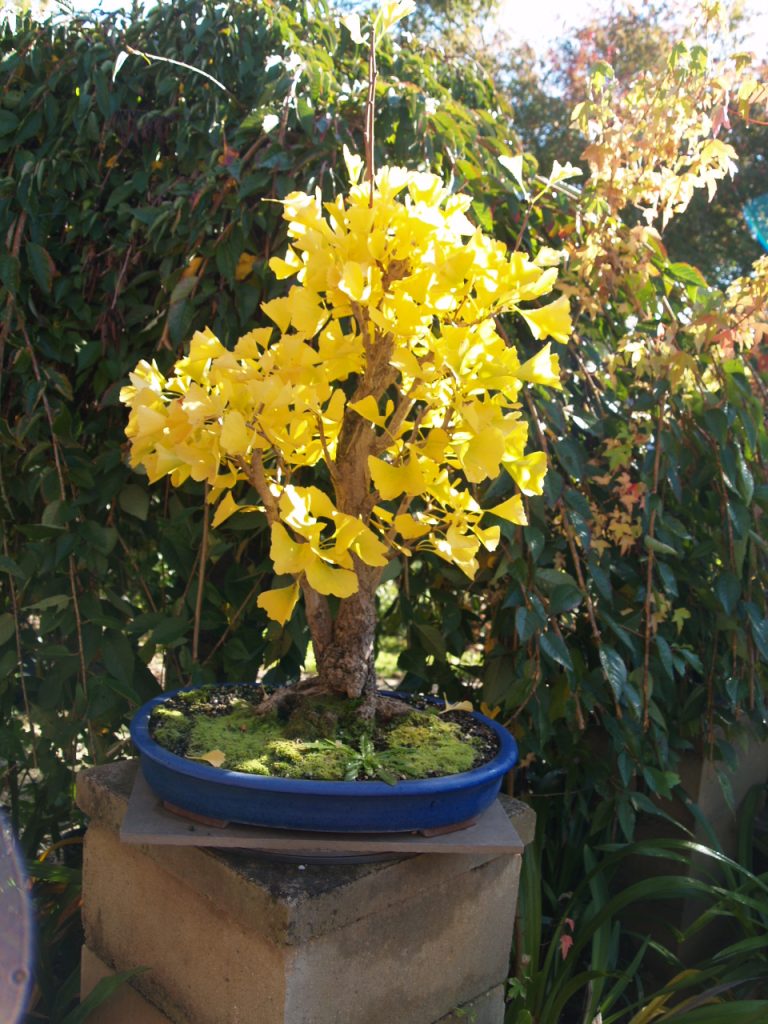April means cooler nights here at Shibui Bonsai. The trees have begun to sense winter coming and some of the deciduous trees are putting on their autumn colours.



Zelkova seems to be one of the first species to colour and lose leaves in the autumn. It is also one of the last to leaf out in spring.



It was interesting to see the Japanese maple shown above still has some green leaves on the lower section where they are still protected from the changing temperatures and sun.
Deciduous autumn colour does not last very long. Each tree usually only has coloured leaves for a week or 2 before they fall but that short period can be spectacular.
Trees do not all seem to change at the same time. Some species make the change earlier and some seem to wait for even colder weather so having a range of species in your bonsai collection can extend the autumn colour period.
Even among the same species there’s quite a lot of difference. Some of my trident maples have already dropped leaves while others are still quite green and won’t change for another week or so.
Conditions seem to play a big part in timing and strength of autumn colour. Cold nights followed by bright sunny days seem to promote more intense colours in deciduous trees. The trees that are more exposed colour earlier and more intensely than those that are sheltered from either cold or sun.
Fortunately, the home of Shibui Bonsai in North East Victoria usually has just such autumn conditions so towns like Bright, Beechworth and Yackandandah are well known for spectacular autumn colour.
While most of us can’t manipulate the local climate we can choose species that are known to give better autumn colours, even in less than ideal conditions. Liquidambers are well known for strong autumn colours even in areas that don’t get ideal cool conditions so if you aspire to good deciduous colour in bonsai consider trying liquidamber.
Genetics also affect autumn colours. Within a single species some individuals produce different colours or timing so if you aspire to better autumn colours it’s a good idea to select your starting stock during the peak colour time in autumn. Look for individual trees that have stronger colours or a better display. All other things being equal that should give you trees that have the best potential for good autumn colour displays.
I’ve frequently noticed that trees in very shallow pots also change earlier. The trident forest pictured earlier is usually one of the first to show colour and is now almost bare while other tridents are still clothed in full colour. I guess this discrepancy is due to stresses. The shallow pots dry out more and possibly allow the roots to cool more than deeper containers.
We also know that damaged leaves do not produce the same colours as undamaged leaves. Maples are particularly prone to summer leaf damage in our hot, dry climate so to get the best autumn colour some growers defoliate damaged maples at the end of summer. Provided the new leaves have time to mature and you take care to prevent further scorching you should get a much better autumn show.
Enjoy the next few weeks of colour changes.
